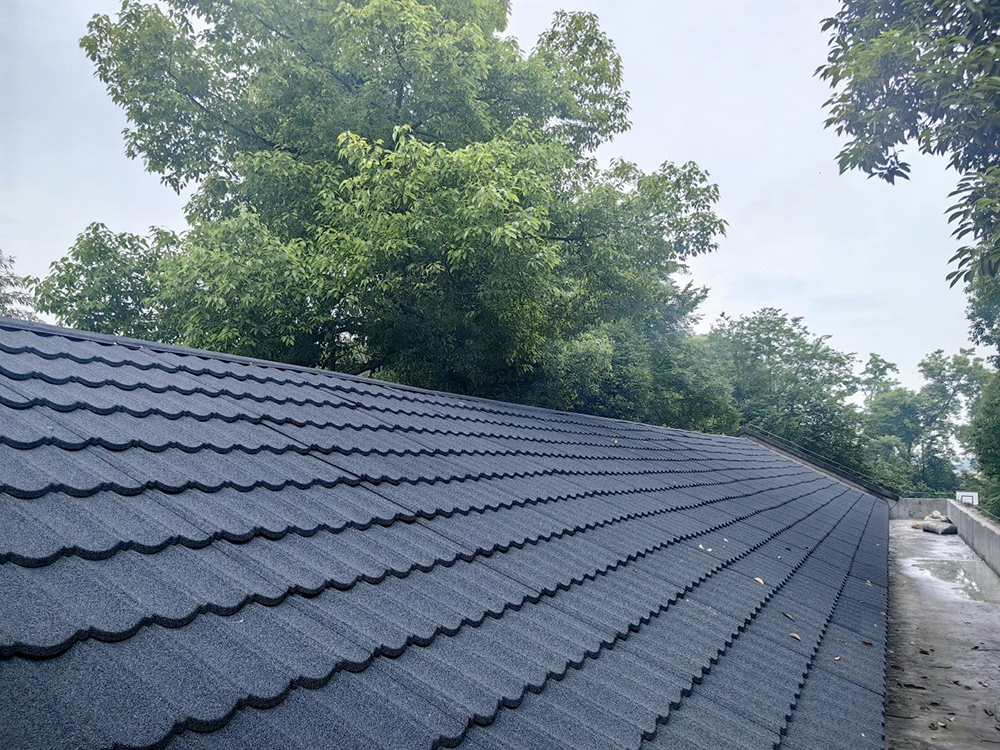

2025-03-18
Colored stone metal, as a high -quality choice for roofing tiles, shows excellent performance in a variety of climatic conditions. During the construction of the house, the choice of tiles plays a key role in the safety and durability of the building. In conditions of low temperatures in winter, strong ultraviolet radiation in the summer and large annual temperatures, traditional tiles often turn out to be incompetent.
In places such as Siberia, Russia, an extremely low ambient temperature can lead to closing and cracking ordinary tiles, while long -term ultraviolet radiation in the southern region of Russia in the summer of Liable to aging materials. Based on this, modern tiles should undergo three main tests: resistance to freezing-freezing, stability index of ultraviolet aging and strength of temperatures, taking into account the linear expansion coefficient.

The non -ferrous metal tile has proven itself in cold climate due to its excellent properties. It is based on an aluminum steel plate, and basalt -colored sand sins on the surface to form a double protective layer. An aluminum steel sheet has good thermal viscosity at low temperatures and can effectively resist the effects of cold climate. Even in colder conditions, colored metal tiles can maintain stable physical properties and will not easily break or deform due to low temperatures, demonstrating reliable durability.
A sessed layer of basalt -colored sand on the surface of colored metal tiles not only has an aesthetic decorative effect, but also has a powerful practical function. This layer of colored sand, which was seduced using a special process, is tightly connected to an aluminum -free steel plate, as if it is a strong armor for tiles. In cold weather, it can amortize the effect of wind and snow, reduce damage to the substrate of the steel plate and ensure the integrity of the tile. At the same time, good heat -insulating characteristics of basalt sand help the building better maintain the temperature in the room in winter and reduce the consumption of thermal energy. It is worth mentioning that basalt sand in itself has excellent resistance to ultraviolet rays, which can effectively absorb and reflect ultraviolet rays, which significantly reduces damage to the ultraviolet rays of the substrate of aluminum steel plate. Due to this, the non -ferrous metal tile under a long period of strong ultraviolet radiation can still maintain a bright color, fading, fineness and other aging phenomena will not appear. An aluminum -free steel plate also plays an important role in the confrontation of ultraviolet rays, and its composition of the alloy can increase resistance to ultraviolet rays, which even more guarantees the stability of the non -ferrous metal in a strong ultraviolet environment and provides its long life.

In some new residential projects in the regions of Russia with a cold climate, after a non -ferrous metal tile is used, the roofs of houses remained integral even after several cold winters. The owners said that compared to how they worried that the roof of traditional tiles could be damaged by the wind and snow every winter, now, using non -colored metal tiles, they feel more comfortable and the safety of the roof is guaranteed. In addition, the heat -saving effect in the premises improved significantly, which has affectedly increased the quality of their life. The non -ferrous metal tile demonstrates excellent results both in cold climate and in conditions of strong ultraviolet radiation, which makes it the perfect choice for roofing tiles. It can provide reliable protection for buildings and a long -term guarantee of the reliability of the operation of buildings.